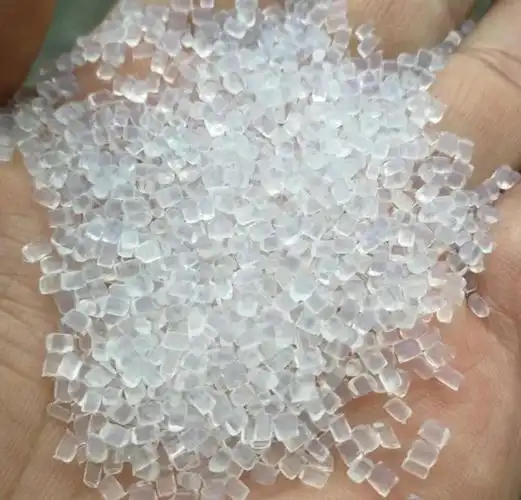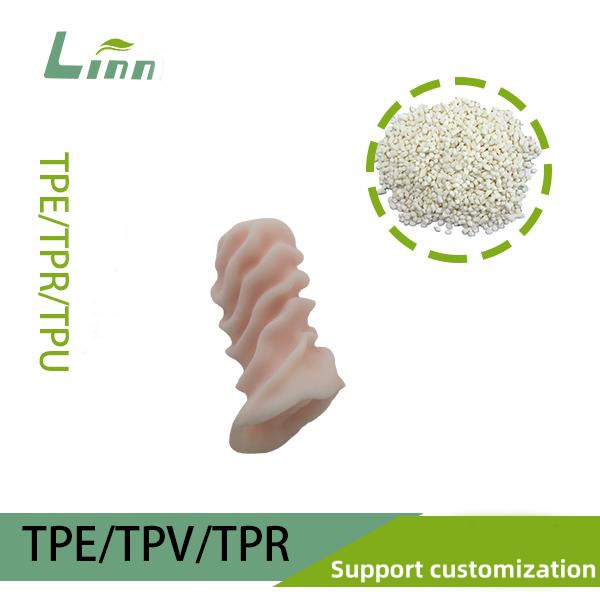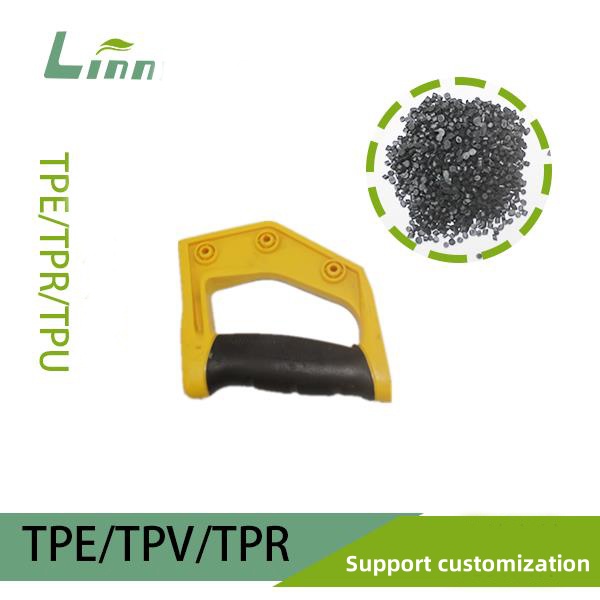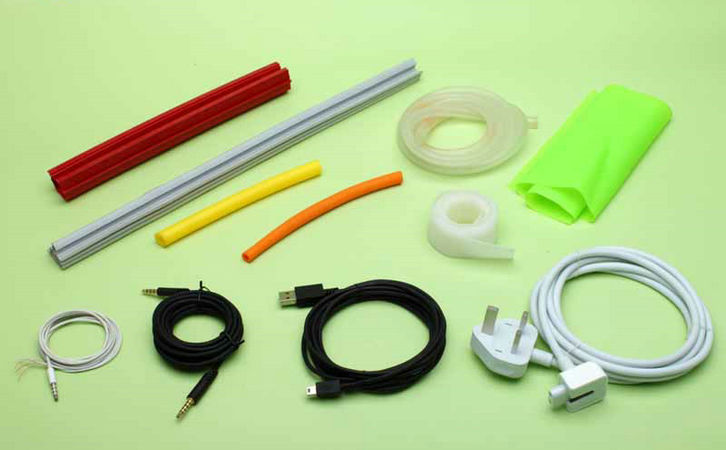As someone who’s spent over 15 years in the injection molding industry, specializing in thermoplastics like TPE (thermoplastic elastomer), I’ve tackled countless design challenges, from mold optimization to troubleshooting production issues. One question that pops up frequently, especially among engineers and mold designers new to TPE, is: “What’s the right size for a TPE injection gate?” It’s a critical detail that can make or break your molding process, affecting everything from part quality to production efficiency. In this article, I’ll share my insights on designing TPE injection gates, drawing from real-world experience and industry best practices. I’ll break down the factors influencing gate size, offer practical guidelines, and provide tips to avoid common pitfalls—all in a way that feels like a conversation with a seasoned colleague.

Why Gate Size Matters in TPE Injection Molding
The injection gate is the entry point where molten TPE flows from the runner system into the mold cavity. Its size and design directly impact the molding process and the final part. Too small, and you risk incomplete filling, high shear stress, or long cycle times. Too large, and you might deal with excessive material waste, poor gate aesthetics, or difficulty in gate removal. For TPE, which is a flexible, elastic material with unique flow properties, getting the gate size right is especially tricky.
I remember a project early in my career where we were molding TPE grips for a consumer product. The initial gate was undersized, causing burn marks and incomplete fills. After resizing the gate and tweaking the design, the parts came out flawless, and we shaved seconds off the cycle time. That experience taught me that gate design isn’t just a technical detail—it’s a balancing act that requires understanding the material, part, and process.
Let’s dive into the key considerations for determining the optimal TPE gate size.
Key Factors Influencing TPE Gate Size
TPE’s behavior in the mold depends on its composition (e.g., SEBS, TPU, or TPV), viscosity, and processing conditions. Here are the main factors to consider when sizing the gate:
1. Material Viscosity and Flow Behavior
TPEs vary widely in viscosity, from low-viscosity grades that flow easily to high-viscosity ones that require more pressure. Low-viscosity TPEs can handle smaller gates, while high-viscosity grades need larger gates to ensure proper filling without excessive shear. Shear sensitivity is a big deal with TPE—too much shear from a tiny gate can degrade the material, causing burn marks or reduced elasticity.
I once worked on a TPU-based TPE part where the client insisted on a tiny pin gate for aesthetics. The high-viscosity material struggled to flow, leading to short shots. We switched to a slightly larger fan gate, and the problem vanished. Always check the material’s melt flow index (MFI) or consult the supplier’s technical data sheet to gauge viscosity.
2. Part Geometry and Size
The size, thickness, and complexity of the part play a huge role in gate sizing. Thin-walled parts (e.g., 1 mm or less) require larger gates to fill quickly before the material cools, while thicker parts (e.g., 3 mm or more) can tolerate smaller gates. Complex geometries with long flow paths or multiple cavities need larger gates to ensure uniform filling.
For example, I designed a mold for a TPE overmolded phone case with thin walls (0.8 mm). We used a fan gate sized at 1.2 mm wide to ensure even flow without freezing off. For a thicker TPE gasket (5 mm), a 0.8 mm pin gate worked fine due to shorter flow paths.

3. Gate Type
The gate type—pin, fan, edge, submarine, or valve—dictates its size. Each has pros and cons for TPE:
Pin gates: Small, round gates (0.5-1.5 mm diameter) ideal for small parts or cosmetic surfaces but prone to shear.
Fan gates: Wide, thin gates (0.5-2 mm thick, 2-10 mm wide) great for thin-walled or large parts, ensuring even flow.
Edge gates: Common for TPE (0.5-2 mm thick), versatile but may leave visible marks.
Submarine gates: Angled gates (0.8-2 mm diameter) that shear off automatically, good for automation but tricky for soft TPE.
Valve gates: Larger (2-4 mm diameter), used for precision or multi-cavity molds, minimizing gate vestige.
I often lean toward fan or edge gates for TPE because they balance flow and aesthetics. Pin gates are tempting for small parts, but they can cause issues with high-viscosity TPEs.
4. Processing Conditions
Injection pressure, temperature, and cycle time affect gate size. Higher pressures allow smaller gates but increase shear, while lower pressures need larger gates for adequate flow. TPE typically processes at 180-230°C and moderate pressures (50-100 MPa), but these vary by grade. Smaller gates can freeze off too quickly, extending cycle times, while larger gates may require longer cooling.
I recall a TPV seal project where we oversized the gate to reduce cycle time, but it left a noticeable vestige. After optimizing the gate to 1 mm and adjusting the injection speed, we got clean parts with minimal waste.
5. Aesthetic and Functional Requirements
TPE parts often have visible surfaces (e.g., grips, seals, or overmolds), so gate placement and size impact cosmetics. Smaller gates leave less visible marks but may compromise flow. Larger gates ensure filling but may require trimming, affecting appearance or function. For overmolded parts, gate size must avoid damaging the substrate.
I worked on a TPE wristband where the client demanded an invisible gate. We used a 0.6 mm submarine gate hidden on the inner surface, balancing aesthetics and function.

General Guidelines for TPE Gate Sizing
Based on my experience and industry standards, here’s a starting point for TPE gate sizes, assuming typical part thicknesses (1-3 mm) and medium-viscosity TPE:
Pin gates: 0.5-1.2 mm diameter for small parts (<50 g) or cosmetic surfaces.
Fan gates: 0.5-1.5 mm thick, 2-8 mm wide for thin-walled or large parts.
Edge gates: 0.5-2 mm thick, 1-5 mm wide for general-purpose parts.
Submarine gates: 0.8-1.8 mm diameter for automated production.
Valve gates: 2-3.5 mm diameter for precision or multi-cavity molds.
These are rough ranges—always fine-tune based on your material, part, and mold. For thin walls (<1 mm), increase gate size by 20-30%. For high-viscosity TPEs, go 10-20% larger. Use mold flow analysis software (e.g., Moldflow or SolidWorks Plastics) to simulate flow and optimize gate size before cutting steel.
Here’s a TPE gate size reference table for common scenarios:
| Gate Type | Typical Size | Best For | Notes |
|---|---|---|---|
| Pin Gate | 0.5-1.2 mm diameter | Small parts, cosmetic surfaces | High shear risk; avoid for high-viscosity TPE |
| Fan Gate | 0.5-1.5 mm thick, 2-8 mm wide | Thin-walled or large parts | Ensures even flow; may need trimming |
| Edge Gate | 0.5-2 mm thick, 1-5 mm wide | General-purpose parts | Versatile; visible gate mark |
| Submarine Gate | 0.8-1.8 mm diameter | Automated production | Hidden gate; tricky for soft TPE |
Step-by-Step Approach to Designing a TPE Gate
To nail the gate size, follow this process, which I’ve refined over years of trial and error:
Analyze the Material: Check the TPE’s MFI, viscosity, and shear sensitivity. Consult the supplier for recommended gate sizes or processing conditions.
Evaluate the Part: Note wall thickness, flow length, and cosmetic requirements. Thin walls or long flow paths need larger gates.
Select Gate Type: Choose based on part size, aesthetics, and production needs. Fan or edge gates are safe bets for most TPE parts.
Start with a Conservative Size: Use the guideline ranges above. Slightly larger is better than too small—you can always reduce gate size in mold trials.
Run Mold Flow Analysis: Simulate filling, shear, and cooling to confirm gate performance. Adjust size if needed.
Prototype and Test: Build a prototype mold or use a test cavity. Monitor for short shots, burn marks, or gate vestige.
Optimize in Production: Fine-tune gate size, injection speed, and pressure during trials to balance quality and efficiency.
I used this approach for a TPE medical seal with strict dimensional tolerances. We started with a 1 mm edge gate, ran simulations, and adjusted to 1.2 mm after trials to eliminate short shots. The final parts met specs and ran smoothly in production.

Common Pitfalls and How to Avoid Them
TPE gate design has its share of gotchas. Here’s what I’ve learned to steer clear of:
Undersized Gates: Cause short shots, burn marks, or high shear. Always err on the larger side for TPE, especially high-viscosity grades.
Poor Gate Placement: Gates too close to thin walls or complex features can cause flow issues. Place gates in thicker sections or areas with shorter flow paths.
Ignoring Shear: TPE is shear-sensitive. Small gates with high injection speeds degrade material. Use moderate speeds and larger gates.
Overlooking Vestige: Large gates leave noticeable marks. For cosmetic parts, use submarine or pin gates, or plan for post-molding trimming.
Skipping Simulations: Mold flow analysis saves time and money. I once skipped it to rush a project and ended up with a costly mold rework.
A memorable lesson came from a TPE toy project where we used a 0.4 mm pin gate to minimize vestige. The gate froze off mid-fill, causing defects. A quick resize to 0.7 mm fixed it, but we lost a week of production. Now, I always validate designs with simulations.
Advanced Tips for TPE Gate Design
For seasoned designers or complex projects, here are some extra tricks I’ve picked up:
Tapered Gates: Slightly taper the gate (e.g., 1°-2°) toward the cavity to reduce shear and ease gate removal.
Multiple Gates: For large or complex parts, use multiple smaller gates to improve flow and reduce weld lines. Space them evenly to avoid stress.
Hot Runners: For high-volume TPE production, consider valve-gated hot runners to eliminate runner waste and control gate vestige.
Gate Inserts: Use interchangeable gate inserts in the mold to test different sizes without reworking the entire tool.
Cooling Optimization: Ensure adequate cooling near the gate to prevent stringing or prolonged cycle times, especially with larger gates.
I applied tapered gates to a TPE automotive seal mold, reducing shear and improving gate break-off. The client was thrilled with the clean parts and faster cycles.

Real-Life Case: Solving a TPE Gate Sizing Issue
Let me share a story from a recent project. A client was molding TPE overmolded handles for a kitchen tool. The initial mold used a 0.5 mm pin gate, chosen for minimal vestige. However, the high-viscosity SEBS-based TPE caused short shots and burn marks, and the cycle time was too long due to gate freeze-off.
I reviewed the design and ran a mold flow simulation, which showed excessive shear at the gate. We switched to a 1 mm fan gate, positioned along a non-cosmetic edge. After trials, we fine-tuned it to 0.9 mm thick and 4 mm wide, optimizing injection speed to 50 mm/s. The result? Perfectly filled parts, no burns, and a 15% reduction in cycle time. The client saved thousands in production costs, and the handles passed durability tests with flying colors.
This case reinforced the importance of matching gate size to material and part requirements, with simulations as a critical checkpoint.
Final Thoughts
Designing the right injection gate for TPE isn’t just about picking a number—it’s about understanding your material, part, and process, then striking a balance between flow, aesthetics, and efficiency. Whether you’re molding a soft grip, a medical seal, or an automotive component, a well-sized gate can transform your production from frustrating to flawless. Use the guidelines and tips I’ve shared as a starting point, but don’t shy away from simulations or trials to dial it in. If you’re stuck on a tricky TPE gate design, drop a comment with details—I’d love to help you brainstorm a solution!

Related Questions and Answers
1. Can I use the same gate size for different TPE grades?
No, gate size depends on the TPE’s viscosity. Low-viscosity grades can use smaller gates (e.g., 0.5-0.8 mm), while high-viscosity grades need larger ones (e.g., 1-2 mm). Check the material’s MFI and run simulations.
2. Why do my TPE parts have burn marks near the gate?
Burn marks often result from excessive shear in a small gate or high injection speed. Increase the gate size by 20-30% or reduce speed. Ensure proper venting to avoid trapped air.
3. How do I minimize gate vestige on TPE parts?
Use submarine or pin gates for hidden or minimal vestige. For visible gates, taper the design and optimize cooling to ensure clean break-off. Post-molding trimming may be needed for larger gates.
4. Are fan gates better than pin gates for TPE?
Fan gates are better for thin-walled or large TPE parts due to even flow and lower shear. Pin gates work for small, cosmetic parts but risk shear issues with high-viscosity TPEs.
5. Should I always use mold flow analysis for TPE gate design?
It’s highly recommended, especially for complex parts or tight tolerances. Simulations predict flow, shear, and cooling issues, saving costly mold reworks. For simple parts, guidelines and trials may suffice.





